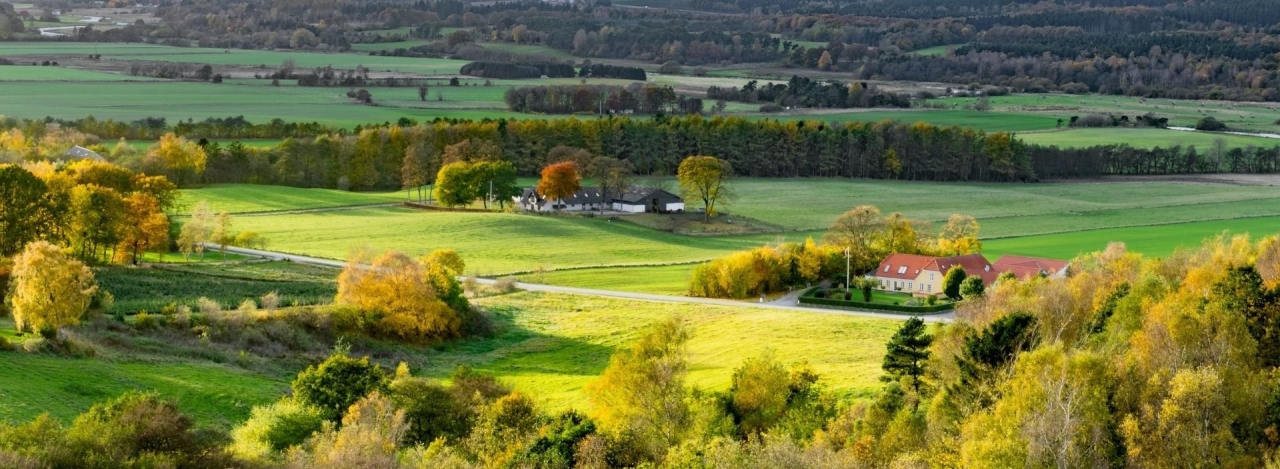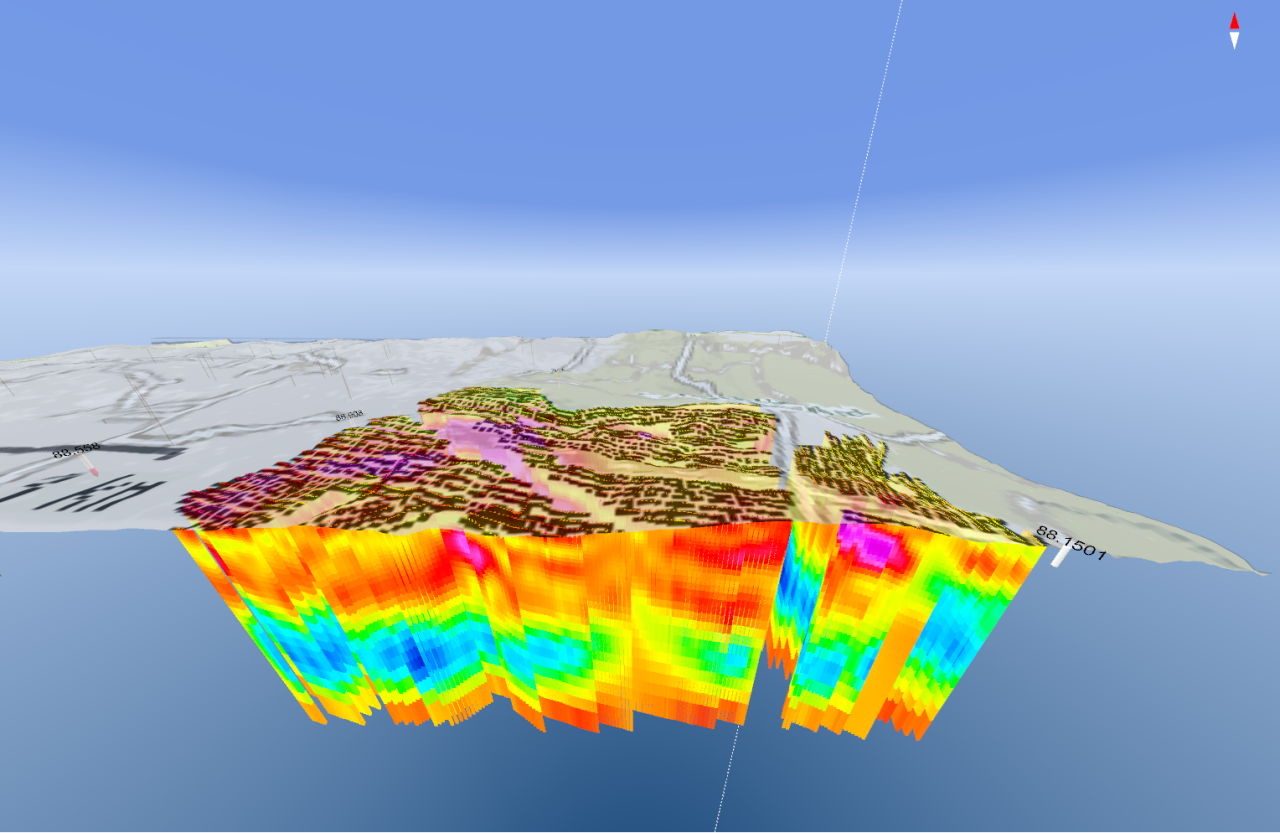Safeguarding Groundwater Resources: A View From Denmark
Successful practices to advance sustainable management around the world
Published 04-26-22
Submitted by WSP

Human beings and natural ecosystems depend on groundwater to survive and thrive. While levels of water use vary significantly throughout the world,1 protecting groundwater resources is a global necessity, especially with population growth and the impacts of climate change, such as more intense and frequent floods and droughts.
In Denmark, 99 percent of drinking water comes from groundwater—water that exists in saturated zones beneath the land surface.2 In the following Q&A, WSP groundwater experts Thomas Hauerberg Larsen and Katerina Tsitonaki discuss how Denmark protects groundwater resources; they also share insights and practices that can advance the sustainable management of groundwater resources around the world.
Experts: Thomas Hauerberg Larsen, M.Sc., Ph.D. Chemical Engineering - Technical Director, Contaminated Soil and Groundwater; and Katerina Tsitonaki, M.Sc., Ph.D. Environmental Engineering – Technical Director, Contaminated Soil and Groundwater.
Groundwater provides almost half of all drinking water worldwide, about 40% of water for irrigated agriculture and about 1/3 of water supply required for industry. It sustains ecosystems, maintains the baseflow of rivers and prevents land subsidence and seawater intrusion.
Source: Groundwater Overview: Making the invisible visible, United Nations, UN Water

What are the central issues pertaining to groundwater around the world?
Katerina Tsitonaki: Issues vary in different parts of the world. In Australia, California, the Mediterranean and Middle East, the main problems are scarcity and seawater intrusion from overextraction. In Scandinavia and other areas where there is a coastal temperate climate, pollution is often the main threat. Pollution can originate from agricultural use of fertilizers resulting in high nitrate levels, from pesticides or chemicals used in animal feed, such as zinc, copper and antibiotics, as well as diffuse deposition from air and rain. In urban areas, industrial chemicals such as PFAS [per-and polyfluoroalkyl substances] and chlorinated solvents can be a threat. In other parts of the world, naturally occurring contaminants such as arsenic can be a threat.
Climate change also affects groundwater resources around the globe. In some areas, decreasing rainfall, in combination with higher temperatures leads to a reduced recharge of the resources, and therefore groundwater depletion. In other regions, such as in Denmark, increased rainfall leads to a rise of the groundwater table close to or above the surface, which can be destructive for farmland, and/or the urban environment.
How does Denmark protect groundwater resources and maintain quality drinking water?
Thomas Hauerberg Larsen: Denmark is highly dependent on good quality groundwater. According to Danish legislation, drinking water should come from clean groundwater that does not undergo advanced treatment other than simple aeration, pH adjustment (which is rare), and filtration through sand to remove particles and iron minerals.
In order to protect groundwater resources, there are comprehensive technical and regulatory measures in place covering restrictions on the use of fertilizers and pesticides. In addition, municipally regulated groundwater extraction prevents overextraction, and strong prioritization and a proactive approach characterize regional efforts, which are based on established region-wide strategies. For example, regional authorities have the responsibility to find, investigate, risk assess and, if necessary, clean up older brownfield sites that pose a threat to groundwater; sites that do not pose a risk in the immediate future but are deemed to pose a future risk are also included in this effort.
On the national level, a coordinated mapping of groundwater resources and a monitoring system for pollutants in both shallow and deep groundwater, as well as in other water bodies, shapes a comprehensive approach to protecting the country’s water resources.
In addition, taxes on water use and disposal have led to less abstraction of water for industrial use and domestic use. Furthermore, effective monitoring of the water distribution systems leads to a fast detection and reparation of water leakages, and therefore there is little water loss through the system. This has led to almost halving the extracted amount of water since extraction peaked in the late 1970s early 80s.
Katerina Tsitonaki: It is also important to point out that Denmark benefits from a culture of trust and knowledge-sharing between consultants and authorities, and even among competitors. The small size of the country [approximately 5.8 million people] means that a lot of professionals within the field of soil and groundwater know each other. Through annual conferences and meetings, many of them organized by the ATV Foundation of Soil and Groundwater, which at present is chaired by WSP, new methods and trends are openly discussed and shared. The common aim is to secure groundwater resources.
Also helpful, the authorities are development-oriented and eager to try out new methods for site investigation and site clean-up or for groundwater protection. This point is manifested through contributions to technology-development projects and (co)financing university research projects and PhDs. The Danish Regions have sites for the purpose of testing new methods. The Danish EPA [Environmental Protection Agency] offers the opportunity to finance small technology development projects every year. The authorities have high standards regarding documentation that a method works as intended and in the long term.
What are the main challenges associated with groundwater in Denmark?
Katerina Tsitonaki: As the Danish authorities are responsible for more than 35,000 heritage sites, many of which are on top of important groundwater resources, there is a lot of attention to prioritizing which sites should be investigated as well as which sites should be remediated. The latest approach is to prioritize and design remediation efforts based on tolerable mass discharges towards a specific groundwater resource. This is leading to a significant change in acceptable contaminant levels at a contaminated site. Previously to this, any exceedance of the health-based MCLs [maximum contaminant levels], in any type of groundwater, even if it is not meant to be used for drinking water, was considered a problem, and the site would be listed for future clean-up.
In 2020, at least one pesticide component was found in 29 percent of public waterworks wells, and 8.1 percent of the investigated wells had at least one pesticide above the maximum allowed concentration level. It is a huge task to locate the point source and/or the diffuse sources that pose a risk to the groundwater quality. WSP have worked with pesticides on contaminated sites for more than 10 years for the Danish authorities including the Danish EPA.
Nitrate in groundwater is a widespread problem as most of Denmark is agricultural land. Recent studies have raised concern about the effects of elevated nitrate concentrations on health.
If the MCL for nitrate is lowered, it could become difficult to sustain drinking water production from untreated groundwater. Due to intensive agriculture and livestock, a lot of wastewater sludge is spread on the fields. This sludge is high in nutrients, but can also contain hormones, antibiotics and other chemicals which in time can pollute the groundwater resources.
Rising groundwater levels due to climate change is also an issue, for both urban and agricultural areas.
Apart from these challenges, even though there is a centrally coordinated program for the mapping of groundwater resources and a monitoring system for pollutants, many authorities are responsible for maintaining a good groundwater quality. Efforts are sometimes fragmented and uncoordinated. A coordinated national plan for securing good-quality groundwater for future generations in necessary.
Can you suggest a few ways to advance the sustainable management of groundwater resources?
Thomas Hauerberg Larsen: To begin, detailed hydrogeological knowledge is critical for managing groundwater resources. Various geophysical methods have been a keystone in mapping Danish groundwater resources. Mapping the groundwater resource provides valuable information for the assessment of quality, quantity and vulnerability of the aquifers. This is essential for planning water abstraction as well as for protecting the resource by controlling future land use on top of important aquifers. Continuously, new methods are being developed dedicated to this task. In 2003, the Danish-developed helicopter-borne SkyTEM system was introduced as a hydrogeological mapping tool and has been intensively used since then. In 2020, WSP was the first company to acquire a tTEM [towed Transient ElectroMagnetic] system, which is the latest developed geophysical tool capable of detailed 3D mapping of the subsurface geology down to 70 meters depth. The system is a product of focused research at Aarhus University in Denmark, and at WSP in Denmark there is a small qualified team with the expertise to use this tool.
Katerina Tsitonaki: It is also necessary to be proactive in the management of groundwater resources. New analytical methods, such as non-target analysis used in monitoring programs, can provide early warnings on future threats from industrial chemicals, pesticides, antibiotics and other dangerous substances.
Thomas Hauerberg Larsen: To identify and clean up contaminated sites, an array of remediation technologies can be used, depending on the site. An example is thermal remediation, which we used at the Jonstrup3 site recently to remove several hundred kilos of chlorinated solvents, preventing them from reaching the aquifer.
Katerina Tsitonaki: Restricting the use of pesticides in areas of high groundwater recharge and improving farming practices are also essential steps to protect groundwater resources. Today, a lot of farmers in Denmark are applying intelligent pesticide and fertilizer use, based on inputs such as GPS tracking, optical recognition and soil analyses. This measure reflects improvements over traditional practices and can reduce pesticide use.
It is also important to make organic farming attractive. This is partly induced by legislation, consumer demand and demand from some of the large supermarket chains.
1Hannah Ritchie and Max Roser (2017) - "Water Use and Stress," OurWorldInData.org.
2 U.S. Geological Survey (usgs.gov): Groundwater is water that exists in saturated zones beneath the land surface. The upper surface of the saturated zone is called the water table. Groundwater fills the pores and fractures in underground materials such as sand, gravel, and other rock, much the same way that water fills a sponge. If groundwater flows naturally out of rock materials or if it can be removed by pumping (in useful amounts), the rock materials are called aquifers.
3 Jonstrup is approximately 38 kilometres/24miles northwest of Copenhagen.

WSP
WSP
WSP is among the world's largest environmental, engineering, advisory and sustainability consulting firms, with more than 55,000 professionals worldwide. We design lasting solutions in the buildings, transportation, energy, water and environment markets, and develop equitable, ESG-centered strategies that help organizations and communities adapt to changing conditions and become more resilient. Reckon with the past. Innovate for the future. Learn more at wsp.com.
More from WSP

